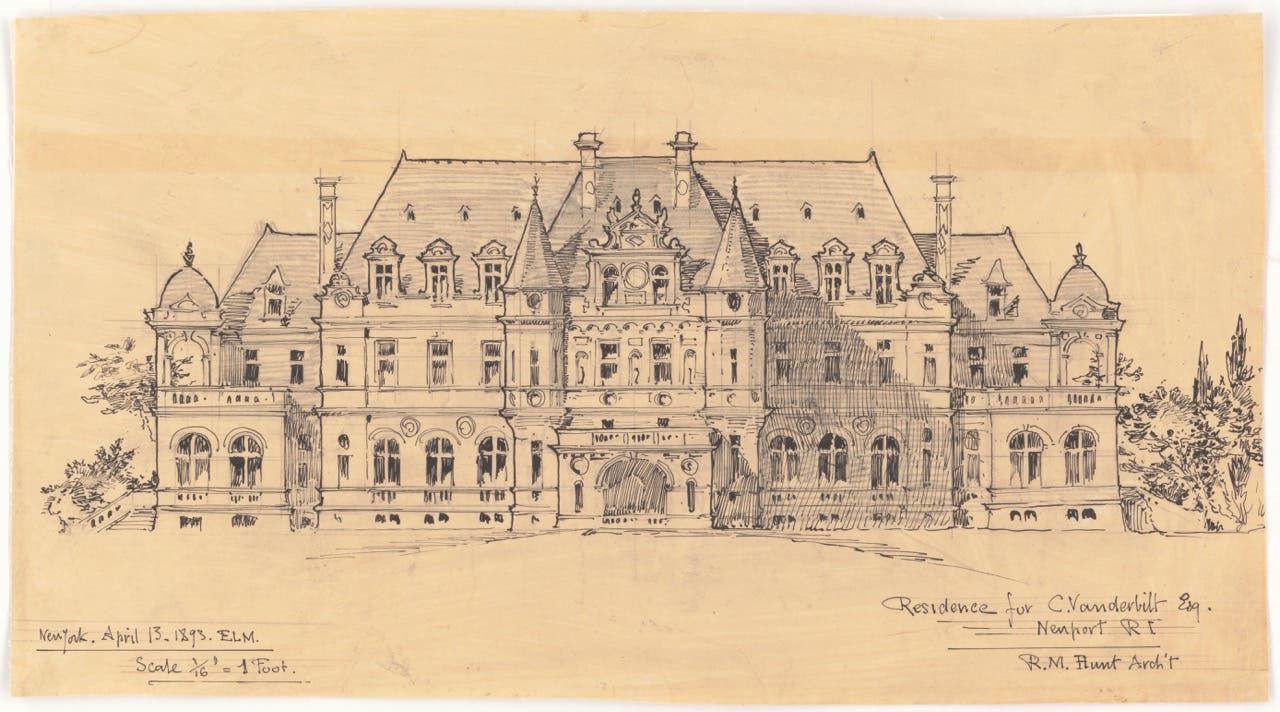
Features
Book Review: Tradition and Invention in Architecture
As an Amazon Associate, we earn from qualifying purchases made through affiliate links.
Tradition and Invention in Architecture: Conversations and Essays
by Robert A.M. Stern; edited by Cynthia Davidson
Yale University Press, New Haven and London; 2012
190 pp; hardcover; more than 250 b&w images; $40
ISBN 978-0-300-18115-9
The combination of talents embodied in the person of Robert A.M. Stern is unique in the world of contemporary architecture. He is at once an architect, historian, author and educator – and has distinguished himself in all four facets of his career. Thus what he has to say about architecture is of more than passing interest.
This latest book from Stern is a compendium of 26 essays and interviews generated over the past five decades. The writings give the reader considerable insight into the mind of the only neo-traditional architect who has reached brand-name status – and who has done so without the support of most mainstream architectural critics. Unlike most books by Robert A.M. Stern, this is not a multi-pound behemoth. But what it may lack in poundage, it makes up for in the heft and clarity of the ideas set forth; Stern's lucid prose is not cluttered with the jargon and polysyllabic abstractions that fog so many treatises of architectural commentary.
In the course of the book, Stern reflects on his own work, on the American architectural landscape, and on the works of other architects, such as George Howe, Philip Johnson, Norman Foster, Louis Kahn, Robert Moses, and more. Traditional and Invention will be of special interest to architects who, like Stern, employ historically inflected language in design – and who suffer opprobrium from Modernist colleagues and critics for hewing to traditional forms.
Stern sets forth compelling arguments for neo-traditional design, while avoiding vitriolic attacks on Modernism. His "big tent" view of architecture helps explain why, as dean of the Yale School of Architecture, he is able to recruit visiting professors with views as wildly divergent as those of Leon Krier and Thom Mayne.
Reinforcing the Special Character of Place
The volume underscores Stern's contention that architecture should be about placemaking – and not merely an opportunity for flamboyant personal display. He advocates for buildings that reflect continuity with historical building tradition and which respect the context in which they are placed. Stern favors architecture that places a higher value on superior function than on ego-centric design – buildings that serve client needs rather than demonstrating the designer's dedication to novelty.
This excerpt from the book's first essay provides an excellent summary of Stern's overall philosophy: "In 1925 Le Corbusier offered the challenge, 'architecture or revolution.' For our moment, I would propose a different challenge in a more conciliatory tone: tradition and modernity. The public is entitled to buildings that do not threaten, by their very being, the aesthetic and cultural values of the buildings around them. Architecture is a public act, not a private celebration of what the architect had for breakfast . . . or the abstract pattern into which the napkin is folded; architecture is a commemorative celebration of place and culture."
The book's title, Tradition and Invention in Architecture, embodies the subtle notion that Modernists overlook when they decry historically inspired design as "copying" or "imitation." As Stern puts it in his preface: "I believe that an architect must both recall and invent, participate in a continuum yet contribute to its evolution, strive to be fresh and inventive without casting aside the time-honored values and the fundamental discourse that make it all intelligible."
Stern's emphasis on the role of architecture in placemaking takes on special significance in his essay on "Buildings as Brands." This is a theme that Stern has developed over the years – and which has found particular resonance among educational institutions. Harvard is one of his examples: During its explosive growth in the last 125 years, each school at Harvard built new structures according to their own whims, totally diffusing the school's physical identity.
At the same time, Harvard faced competition from new rivals – such as Stanford – that hired top architects and landscape architects to design attractive new campuses in coherent traditional styles. These new institutions had almost overnight created strong, highly appealing, educational brands. In response, Harvard realized it needed to strengthen the red-brick Georgian style that was the visible core of its brand. Stern's Spangler Hall at Harvard (dedicated in 2001) was designed specifically to reinforce the Georgian look of the campus and to help rebuild the architectural brand.
The Walt Disney Corp. is also singled out as a company that has been especially effective at using architecture as a key element in its branding and marketing. Former Disney CEO Michael Eisner was relentless in insisting that architects use their talents to tell the Disney story rather than to showcase their individual self-expression.
Although he includes a sympathetic essay on Classical architecture, Stern is not an advocate for any particular architectural style. Rather, he argues for appropriate styles that are in keeping with the special character of a place. He is quite aware of the shortcomings of Modernism (e.g., "…buildings as industrial objects and not as representations of culture") – but he has designed Modernist buildings when that was what the context called for.
One small disappointment for this reviewer was that there's nothing in the book reflecting on Stern's experience as dean of the Yale School Architecture. Perhaps that is going to be fodder for an entirely new volume. But this book is rich in theoretical support for any designer who is inclined to work in traditional idioms; there is material here for a decade's worth of client presentations.
Clem Labine is the founder of Old-House Journal, Clem Labine’s Traditional Building, and Clem Labine’s Period Homes. His interest in preservation stemmed from his purchase and restoration of an 1883 brownstone in the Park Slope section of Brooklyn, NY.
Labine has received numerous awards, including awards from The Preservation League of New York State, the Arthur Ross Award from Classical America and The Harley J. McKee Award from the Association for Preservation Technology (APT). He has also received awards from such organizations as The National Trust for Historic Preservation, The Victorian Society, New York State Historic Preservation Office, The Brooklyn Brownstone Conference, The Municipal Art Society, and the Historic House Association. He was a founding board member of the Institute of Classical Architecture and served in an active capacity on the board until 2005, when he moved to board emeritus status. A chemical engineer from Yale, Labine held a variety of editorial and marketing positions at McGraw-Hill before leaving in 1972 to pursue his interest in preservation.








